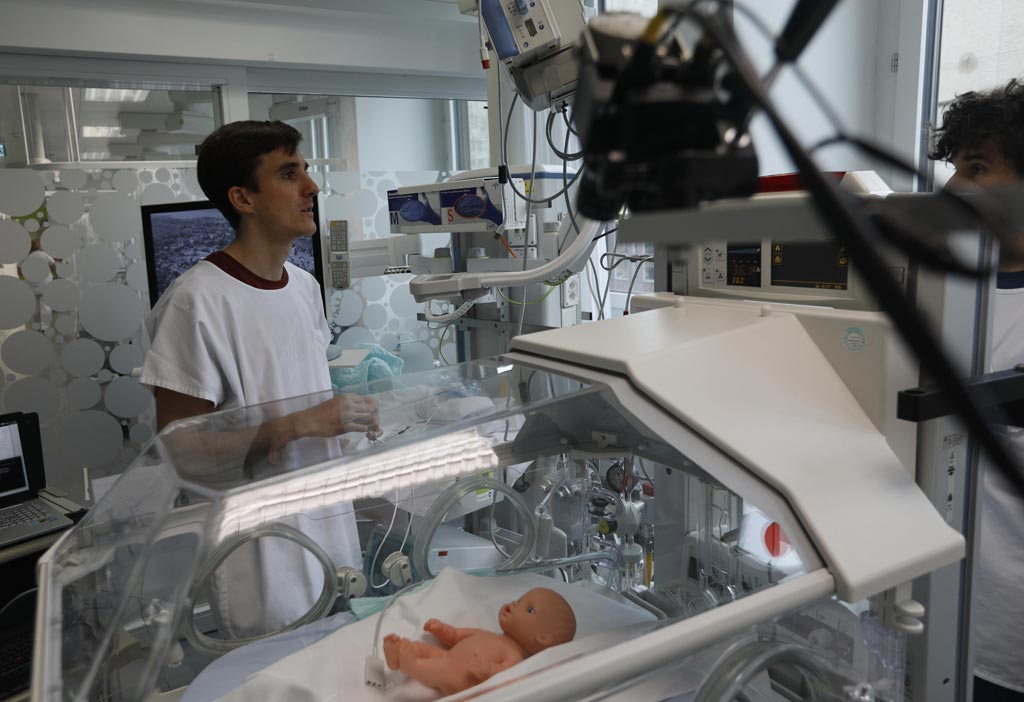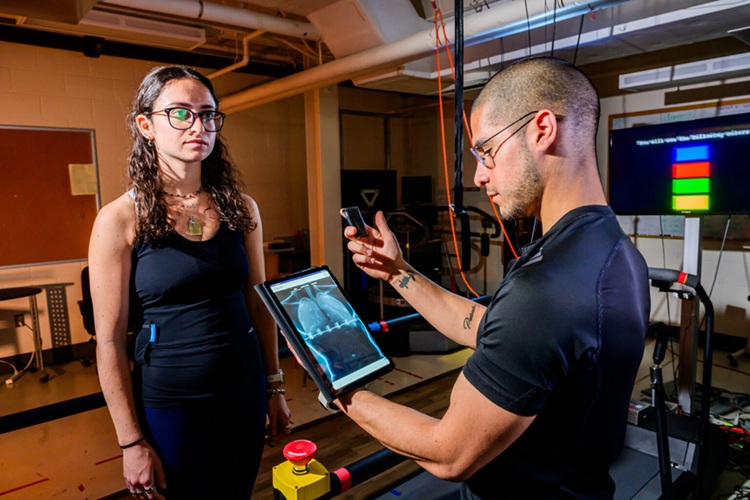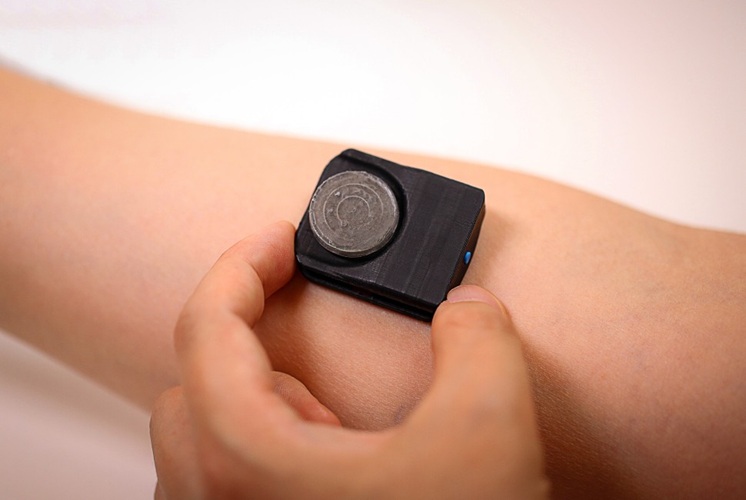Wireless Camera System Monitors Premature Babies
|
By HospiMedica International staff writers Posted on 27 Apr 2017 |

Image: Video cameras my soon be used to monitor preemies (Photo courtesy of EPFL).
Premature babies kept warm in neonatal incubators could soon be medically monitored using cameras rather than with sensors attached to their skin.
The system, under development at Ecole Polytechnique Fédérale de Lausanne, Centre Suisse d'Electronique et de Microtechnique and at University Hospital Zürich, is based on optical surveillance using video cameras sensitive enough to detect the minute changes in skin color that occur with every heartbeat, and on algorithms that process the colorimetric data in real time.
While the CSEM focused on respiration measurement by detecting movements of the thorax and shoulders, the EPFL worked on detecting heart rate. At night, infrared cameras take over surveillance, which according to the researchers means that continuous visual monitoring could soon replace the adhesive transcutaneous skin sensors used today to measure the vital signs of premature babies. Clinical tests will soon commence at USZ.
“Skin sensors placed on the babies’ chests are so sensitive that they generate false alarms up to 90% of the time, mainly caused by the babies moving around,” said Jean-Claude Fauchère, MD, of the USZ neonatal clinic. “This is a source of discomfort for the babies, because we have to check on them every time. It’s also a significant stress factor for nurses and a poor use of their time – it distracts them from managing real emergencies and can affect quality of care.”
“The camera system was developed to improve the way babies’ heart rates and breathing are monitored. We ran an initial study on a group of adults, where we looked at a defined patch of skin on their foreheads,” said Sibylle Fallet, a PhD student at EPFL. “With our algorithms we can track this area when the person moves, isolate the skin pixels and use minor changes in their color to determine the pulse. The tests showed that the cameras produced practically the same results as conventional sensors.”
Premature babies in the neonatal intensive care unit (nICU) are fragile and at risk of sudden changes in oxygenation (pO2) and carbon dioxide (pCO2) levels, which can cause severe complications. Too much oxygen (hyperoxia) or too little (hypoxia) can cause the neonates to develop respiratory distress syndrome and other complications, such as retinopathy of prematurity, bronchopulmonary dysplasia, or periventricular leukomalacia.
The system, under development at Ecole Polytechnique Fédérale de Lausanne, Centre Suisse d'Electronique et de Microtechnique and at University Hospital Zürich, is based on optical surveillance using video cameras sensitive enough to detect the minute changes in skin color that occur with every heartbeat, and on algorithms that process the colorimetric data in real time.
While the CSEM focused on respiration measurement by detecting movements of the thorax and shoulders, the EPFL worked on detecting heart rate. At night, infrared cameras take over surveillance, which according to the researchers means that continuous visual monitoring could soon replace the adhesive transcutaneous skin sensors used today to measure the vital signs of premature babies. Clinical tests will soon commence at USZ.
“Skin sensors placed on the babies’ chests are so sensitive that they generate false alarms up to 90% of the time, mainly caused by the babies moving around,” said Jean-Claude Fauchère, MD, of the USZ neonatal clinic. “This is a source of discomfort for the babies, because we have to check on them every time. It’s also a significant stress factor for nurses and a poor use of their time – it distracts them from managing real emergencies and can affect quality of care.”
“The camera system was developed to improve the way babies’ heart rates and breathing are monitored. We ran an initial study on a group of adults, where we looked at a defined patch of skin on their foreheads,” said Sibylle Fallet, a PhD student at EPFL. “With our algorithms we can track this area when the person moves, isolate the skin pixels and use minor changes in their color to determine the pulse. The tests showed that the cameras produced practically the same results as conventional sensors.”
Premature babies in the neonatal intensive care unit (nICU) are fragile and at risk of sudden changes in oxygenation (pO2) and carbon dioxide (pCO2) levels, which can cause severe complications. Too much oxygen (hyperoxia) or too little (hypoxia) can cause the neonates to develop respiratory distress syndrome and other complications, such as retinopathy of prematurity, bronchopulmonary dysplasia, or periventricular leukomalacia.
Latest Patient Care News
- Portable Biosensor Platform to Reduce Hospital-Acquired Infections
- First-Of-Its-Kind Portable Germicidal Light Technology Disinfects High-Touch Clinical Surfaces in Seconds
- Surgical Capacity Optimization Solution Helps Hospitals Boost OR Utilization

- Game-Changing Innovation in Surgical Instrument Sterilization Significantly Improves OR Throughput
- Next Gen ICU Bed to Help Address Complex Critical Care Needs
- Groundbreaking AI-Powered UV-C Disinfection Technology Redefines Infection Control Landscape
- Clean Hospitals Can Reduce Antibiotic Resistance, Save Lives
- Smart Hospital Beds Improve Accuracy of Medical Diagnosis
- New Fast Endoscope Drying System Improves Productivity and Traceability
- World’s First Automated Endoscope Cleaner Fights Antimicrobial Resistance
- Portable High-Capacity Digital Stretcher Scales Provide Precision Weighing for Patients in ER
- Portable Clinical Scale with Remote Indicator Allows for Flexible Patient Weighing Use
- Innovative and Highly Customizable Medical Carts Offer Unlimited Configuration Possibilities
- Biomolecular Wound Healing Film Adheres to Sensitive Tissue and Releases Active Ingredients
- Wearable Health Tech Could Measure Gases Released From Skin to Monitor Metabolic Diseases
- Wearable Cardioverter Defibrillator System Protects Patients at Risk of Sudden Cardiac Arrest
Channels
Critical Care
view channel
Novel Intrabronchial Method Delivers Cell Therapies in Critically Ill Patients on External Lung Support
Until now, administering cell therapies to patients on extracorporeal membrane oxygenation (ECMO)—a life-support system typically used for severe lung failure—has been nearly impossible.... Read more
Generative AI Technology Detects Heart Disease Earlier Than Conventional Methods
Detecting heart dysfunction early using cost-effective and widely accessible tools like electrocardiograms (ECGs) and efficiently directing the right patients for more expensive imaging tests remains a... Read more
Wearable Technology Predicts Cardiovascular Risk by Continuously Monitoring Heart Rate Recovery
The heart's response to physical activity is a vital early indicator of changes in health, particularly in cardiovascular function and mortality. Extensive research has demonstrated a connection between... Read more
Wearable Health Monitoring Device Measures Gases Emitted from and Absorbed by Skin
The skin plays a vital role in protecting our body from external elements. A key component of this protective function is the skin barrier, which consists of tightly woven proteins and fats that help retain... Read moreSurgical Techniques
view channel
Intravascular Imaging for Guiding Stent Implantation Ensures Safer Stenting Procedures
Patients diagnosed with coronary artery disease, which is caused by plaque accumulation within the arteries leading to chest pain, shortness of breath, and potential heart attacks, frequently undergo percutaneous... Read more
World's First AI Surgical Guidance Platform Allows Surgeons to Measure Success in Real-Time
Surgeons have always faced challenges in measuring their progress toward surgical goals during procedures. Traditionally, obtaining measurements required stepping out of the sterile environment to perform... Read moreHealth IT
view channel
Printable Molecule-Selective Nanoparticles Enable Mass Production of Wearable Biosensors
The future of medicine is likely to focus on the personalization of healthcare—understanding exactly what an individual requires and delivering the appropriate combination of nutrients, metabolites, and... Read more
Smartwatches Could Detect Congestive Heart Failure
Diagnosing congestive heart failure (CHF) typically requires expensive and time-consuming imaging techniques like echocardiography, also known as cardiac ultrasound. Previously, detecting CHF by analyzing... Read moreBusiness
view channel
Expanded Collaboration to Transform OR Technology Through AI and Automation
The expansion of an existing collaboration between three leading companies aims to develop artificial intelligence (AI)-driven solutions for smart operating rooms with sophisticated monitoring and automation.... Read more

















